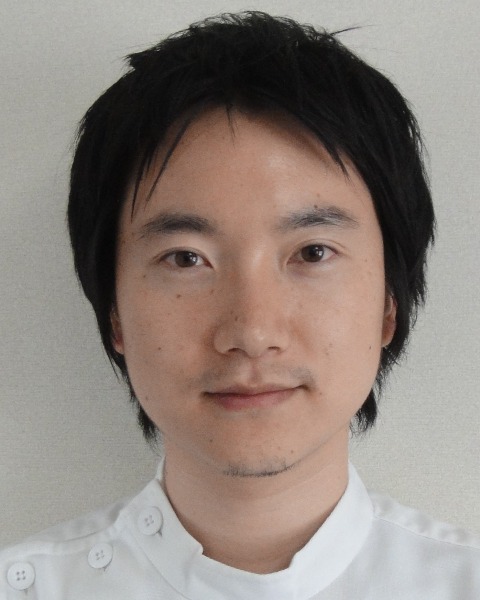Neonatal Neurology: Basic
Category: Abstract Submission
Neurology 2: Basic-Translational
395 - Central and Peripheral Immune Dysregulation Persists Through Adulthood Following Chorioamnionitis
Saturday, April 23, 2022
3:30 PM - 6:00 PM US MT
Poster Number: 395
Publication Number: 395.236
Publication Number: 395.236
Yuma Kitase, Johns Hopkins University School of Medicine, Baltimore, MD, United States; Alexander R. Gall, Johns Hopkins University School of Medicine, Baltimore, MD, United States; Timothy Heck, Johns Hopkins Children's Center, Glen Burnie, MD, United States; Nethra Madurai, Johns Hopkins Hospital, Lutherville-Timonium, MD, United States; Maide Ozen, Johns Hopkins University School of Medicine, Baltimore, MD, United States; Shenandoah Robinson, Johns Hopkins University, Baltimore, MD, United States; Lauren L. Jantzie, Johns Hopkins University School of Medicine, Baltimore, MD, United States

Yuma Kitase, M.D, Ph.D.
Postdoctoral Research fellow
Johns Hopkins University School of Medicine
Baltimore, Maryland, United States
Presenting Author(s)
Background: Preterm infants are at high risk of developing cerebral palsy (CP) and long-term cognitive, behavioral, and neuropsychiatric disorders. A principal cause of preterm birth is chorioamnionitis (CHORIO), defined by profound inflammation and hypoxia-ischemia throughout the maternal-placental-fetal brain axis. Previously, we showed that peripheral immune cells are activated acutely and subacutely following CHORIO, with a unique chemokine and neutrophil signature concomitant with neuroinflammation. However, the time course and chronicity of these changes are unknown in the context of evolving perinatal brain injury.
Objective: To determine if cerebral and peripheral lymphocyte populations are primed and changed long-term following CHORIO. We hypothesized that lymphocyte activation would be a prominent immune signature throughout adulthood.
Design/Methods: We use a well-established model CHORIO in rats, which includes bilateral uterine artery occlusion and intra-amniotic injection of lipopolysaccharide (4µg/sac). Sham controls receive laparotomy alone. On postnatal day 60 (P60) and P120, venous blood and brain was collected from male and female rats. Multiparameter flow cytometry was performed to interrogate immune cell populations in brain and blood. Statistical differences were identified using a Student’s t-test where p< 0.05 was considered significant (n=8-9/group)
Results: CHORIO induced a significant increase in cerebral CD45+CD3+ T-cells (25.1±1.8 vs. 30.9±2.3 %, p< 0.01) together with increased cerebral regulatory T cells (Treg) (CD45+CD3+CD4+CD25+) (21.7±3.7 vs. 33.4±3.0 %, p< 0.05) at P60 compared to control. At P120, cerebral Tregs (24.0±2.1 vs. 36.1±4.4 %, p< 0.05) were still significantly elevated concomitant with increased Helper T-cells (CD45+CD3+CD4+;25.9±3.3 vs. 35.5±1.9 %, p< 0.05). Notably, Tregs were significant increased peripherally at P120 (6.0 ±0.33 vs. 7.36±0.41 %, p< 0.05) in CHORIO animals compared to controls. No significant differences in neutrophils, monocytes or macrophages were observed at either timepoint.Conclusion(s): CHORIO causes persistent changes in multiple T-cell populations throughout adulthood. These changes emphasize a chronically modulated neuro-immune microenvironment, persistent inflammatory state, maladaptive lymphocyte plasticity, and lack of lymphocyte homeostasis throughout the lifespan following CHORIO. Further multifaceted and comprehensive mechanistic studies are needed to guide novel treatment strategies aimed at ongoing inflammation following in utero insults.
Objective: To determine if cerebral and peripheral lymphocyte populations are primed and changed long-term following CHORIO. We hypothesized that lymphocyte activation would be a prominent immune signature throughout adulthood.
Design/Methods: We use a well-established model CHORIO in rats, which includes bilateral uterine artery occlusion and intra-amniotic injection of lipopolysaccharide (4µg/sac). Sham controls receive laparotomy alone. On postnatal day 60 (P60) and P120, venous blood and brain was collected from male and female rats. Multiparameter flow cytometry was performed to interrogate immune cell populations in brain and blood. Statistical differences were identified using a Student’s t-test where p< 0.05 was considered significant (n=8-9/group)
Results: CHORIO induced a significant increase in cerebral CD45+CD3+ T-cells (25.1±1.8 vs. 30.9±2.3 %, p< 0.01) together with increased cerebral regulatory T cells (Treg) (CD45+CD3+CD4+CD25+) (21.7±3.7 vs. 33.4±3.0 %, p< 0.05) at P60 compared to control. At P120, cerebral Tregs (24.0±2.1 vs. 36.1±4.4 %, p< 0.05) were still significantly elevated concomitant with increased Helper T-cells (CD45+CD3+CD4+;25.9±3.3 vs. 35.5±1.9 %, p< 0.05). Notably, Tregs were significant increased peripherally at P120 (6.0 ±0.33 vs. 7.36±0.41 %, p< 0.05) in CHORIO animals compared to controls. No significant differences in neutrophils, monocytes or macrophages were observed at either timepoint.Conclusion(s): CHORIO causes persistent changes in multiple T-cell populations throughout adulthood. These changes emphasize a chronically modulated neuro-immune microenvironment, persistent inflammatory state, maladaptive lymphocyte plasticity, and lack of lymphocyte homeostasis throughout the lifespan following CHORIO. Further multifaceted and comprehensive mechanistic studies are needed to guide novel treatment strategies aimed at ongoing inflammation following in utero insults.
